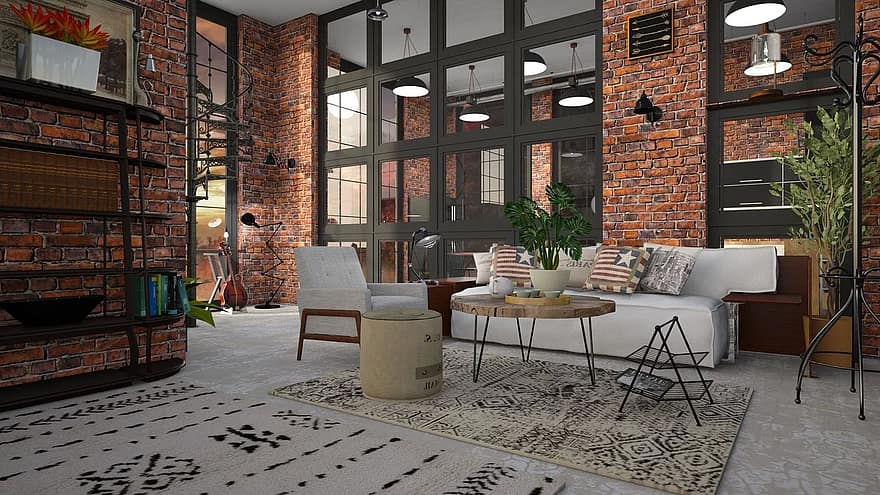
The first lofts appeared in new York in the 1930s and their birth is due to the great depression. Companies went bust one by one. Empty real estate had to be rented out for virtually nothing and not to businesses, but to ordinary people. Most of all, of course, Bohemian artists were lucky – not only is it not expensive, but also atmospheric, lots of space, high ceilings, excellent lighting. The factory floor was perfect for a workshop.
Gradually, lofts began to gain popularity. This was largely due to the actively sown artists and the cultural and festive spirit that they brought with them. New buyers were looking for the spirit first and were willing to pay for it. Already in the 1960s, lofts turned into luxury housing.

And yet it’s not just the flair of Bohemian life. A loft is a space with a history. Typical for the loft, the rough brickwork and uncovered structures of the factory building seem to bear the traces of another era, thus leading a person beyond the boundaries of the moment here-now. The modern city is quite strongly associated with impersonality, focus on success and practicality, reaching the point of complete indifference. In such a space, it is the” unkempt ” and free loft that turns out to be a kind of island of sensitive human attitude to reality.

Conceptually, the loft style is in tune with our art objects. We also usually choose materials with a history – rusty metal or old wood. Time is a great collaborator, and a picture or panel becomes a space for conversation with another era, its culture, character and destinies. It is also important that through history, the material becomes individual – so each sheet of iron or wooden panel becomes a unique person and a real interlocutor of the author.
It’s nice to find such stylistic and ideological harmonies. If found, then surely between the art object and the interior will also be an interesting conversation.

